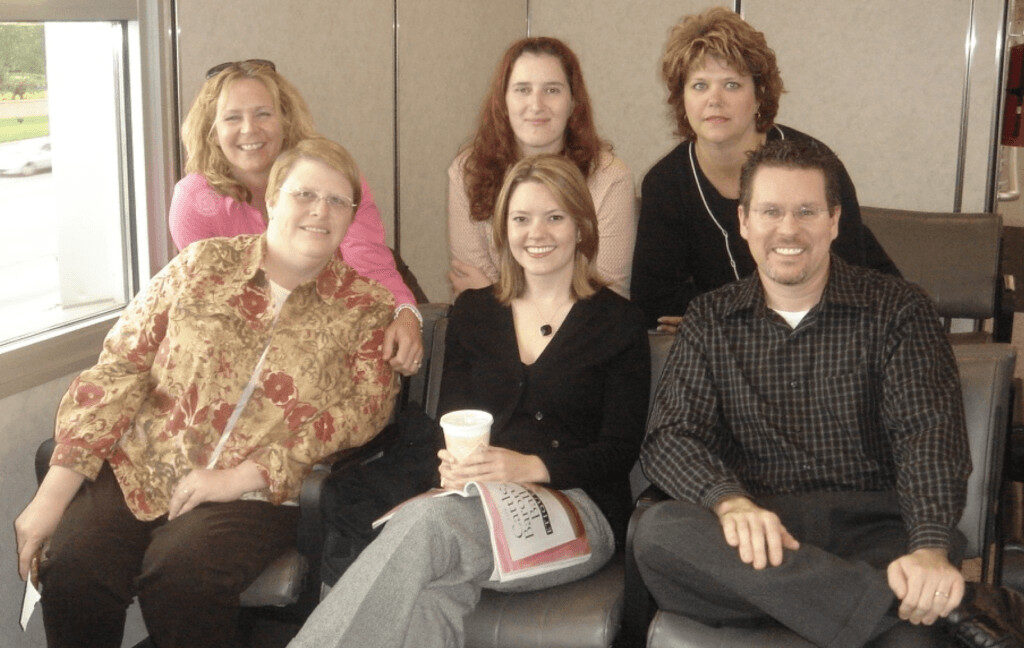Last week at the Lean Healthcare Transformation Summit, “innovation” was one of the themes, which was a pleasant addition to the topics that are normally discussed each year (this being the 8th annual Summit).
For an event that titles itself as being about “transformation,” there's often more discussion about “incremental improvement” than innovation. Maybe it's a fair reflection to ask what's being transformed. Some individuals, including leaders and executives? Sure. Are some organizations being transformed? Perhaps. Are payment models being transformed? In some ways. Is healthcare, as an industry or profession, really being transformed?
Hear Mark read the post (subscribe to the Lean Blog Audio podcast):
Sure, there are stories and examples, from ThedaCare and other organizations, about creating and redesigning models of care that are new or significantly different.
For example, ThedaCare's “collaborative care” model is arguably innovative – it's a reinvention of many aspects of inpatient hospital care. Innovation and transformation aim higher and go beyond the continuous improvement of what we already do.
There's a time and a place for incremental improvement, just as there's a time for innovation, redesign, or transformation. It depends on the situational need and the problem to be solved.
Improvement and innovation can go hand in hand. We could start with the “baby steps” of Kaizen and continuous improvement can get people comfortable with change, as they build confidence and capabilities through practice. People might then realize that “tweaking our current system” might only get us so far… which leads to talk of redesign or transformation.
When I worked as a consultant for ValuMetrix Services, when it was a part of J&J, we led transformation projects in departments and value streams. For example, a 12- to 16-week project in a hospital lab was long enough to allow us to start with a clean sheet of paper, totally redesigning the laboratory's physical layout and work processes. That led to results far more impressive than we probably could have achieved by tweaking the existing system. You can read a PDF case study of one such project here.
But, once we did something innovative and transformational, I always tried to make sure leaders and teams knew how to keep improving their innovative new approach.
As dozens of labs were transformed in the U.S. and Canada (and sometimes in other countries), each of these labs was doing something that, to them, was innovative. But, at the same time, these labs were usually building upon what other labs had done in the name of redesign and transformation.
Each lab is unique (in some ways), so we tried really hard to not let one hospital lab just blindly copy what others had done. Sure, you can learn from others… but I tried to use that as inspiration for figuring out “our own” solution and new design. There were certain consistent guidelines and principles (such as studying the current state, understanding customer needs, focusing on reducing batches and improving flow), but each lab's design was unique in some way.
If a client wanted to go on a benchmarking visit to another hospital (as healthcare organizations tend to do), I tried to push that back until after an initial design had been developed on their own. I think one trap of benchmarking happens with hospitals look to copy because they think it's easier and faster. Hospitals benchmark and intend to copy, but then they start listing all of the ways in which they're different… and why the benchmark solution doesn't apply. So then they do nothing. We need to avoid and prevent that.

While trying to guide teams to develop their own solution (which is not the same as manipulating them to get to my solution), I had at least one client plead with me:
“Just tell us the answer for how our lab should work!”
I think — wait, I KNOW — we got better answers through a process of me guiding a team through a design and change management process than if I had told them what to do. Plus, and here's the major thing…. they had far more buy in to a solution they had developed.
Where do we strike the balance between benchmarking, copying, imitating, and innovating?
At the Summit, one of the more unusual (in a good way) sessions was a talk by a professional jazz musician and professor, Terell Stafford. He started his session by playing some music, of course. That's him playing the trumpet.

I shared some notes from his talk (and others) in my notes from Day 1.
Terell talked about the progression from imitation to innovation. As he discussed his daily routines, Terell said he will spend time listening to recordings from other musicians as a way to learn new songs. Then, he'll develop his own approach to the song.
He talked about students learning how to solo by first downloading transcribed music that allowed them to copy some legendary musician, note for note. Learning how to imitate allows them to then start innovating in their own solos.
That's a theme I've blogged about before, in relation to jazz:
The model is:
- Imitate
- Integrate
- Innovate
I think that applies to Lean and improvement. We might first imitate somebody else's “Kaizen Card” or the ThedaCare “huddle board.”
Then, as we learn from multiple books, sources, visits, and our own experience, we might “integrate” and combine aspects of different methods.
That might, then, allow us to innovate. Or, our imitation and/or integration might be sufficient.
One of my mentors, Norm Bodek, always says there's no shame in stealing ideas. He doesn't mean stealing intellectual property, but he encourages people to spread and share ideas in their organization. Everybody doesn't have to reinvent the wheel within large, multi-site health systems. Our KaiNexus customers try to help spread ideas through our software platform… but that doesn't mean everyone has to copy. Sharing can lead to integration or inspiration… or additional innovation.
I recently discovered this article from HBR:
Defend Your Research: Imitation Is More Valuable Than Innovation
- by Oded Shenkar
The summary:
“The study: Oded Shenkar exhaustively reviewed research on major business-model innovations and on breakthroughs in eight scientific and academic disciplines, ranging from history to neuroscience. In all cases, he found imitation to be a primary source of progress, even though that progress often went unrecognized by executives and scholars. He also discovered that good imitation is difficult and requires intelligence and imagination.”
As Matt May discussed at the Summit, Apple gets called “innovative,” but many of their designs are imitations of German design, as you can see here.
Shenkar wrote:
“Good imitators don't wait; they actively search for ideas worth copying. And they often look far from their industry or home country. They also don't just copy an idea, they come up with a cheaper or better–increasingly it's cheaper and better–mousetrap.”
If you're going to benchmark and copy ThedaCare, you should try to build upon their method. I've heard ThedaCare people encourage others to do the same. Don't just copy… imitate, integrate, and maybe innovate.
He adds something that really resonated with me:
“Many imitators are attracted to the visible elements of an innovation and fail to copy what makes it successful, the “supporting beams.” Sometimes they wrongly assume that what worked in Peoria will work in New York. Others are so glued to the original that they fail to make adjustments that will make an innovation better. To improve their odds, imitators need to understand “true” imitation, develop the capabilities that enable its effective use, and learn to deploy imitation strategies.”
How often do we hear this in Lean circles?
I've been to many organizations that said, sadly, “We visited ThedaCare and we copied their boards.”
But, the boards sit there basically unused. Why? Because they only copied the physical board. They didn't copy the things that mattered – the leader's behaviors, the culture, etc.
It reminds me of what W. Edwards Deming used to say and write about people visiting Japan to try to benchmark or copy:
“American management thinks that they can just copy from Japan–but they don't know what to copy!“
How many organizations say they want to copy Toyota, but then:
- Don't try to copy the humble style of leadership that's so important or
- Don't try to copy the long-term focus of Toyota (I mean, it's only the FIRST principle of The Toyota Way — and it's something Dr. Deming taught)
The Deming Institute shared the above quote and citied the 1980 NBC documentary that introduced Dr. Deming to America… see my blog posts and the original video in these posts:
What do you think? What's the need for “transformation” in healthcare vs. incremental continuous improvement? How do we strike the balance? Where's the proper balance between learning from others, but not being locked into copying exactly what they did?
Please scroll down (or click) to post a comment. Connect with me on LinkedIn.
Let’s work together to build a culture of continuous improvement and psychological safety. If you're a leader looking to create lasting change—not just projects—I help organizations:
- Engage people at all levels in sustainable improvement
- Shift from fear of mistakes to learning from them
- Apply Lean thinking in practical, people-centered ways
Interested in coaching or a keynote talk? Let’s start a conversation.








![What’s Your Organization’s Real Mistake Policy? [Poll]](https://www.leanblog.org/wp-content/uploads/2025/07/Lean-Blog-Post-Cover-Image-2025-07-17T085114.134-100x75.jpg)
